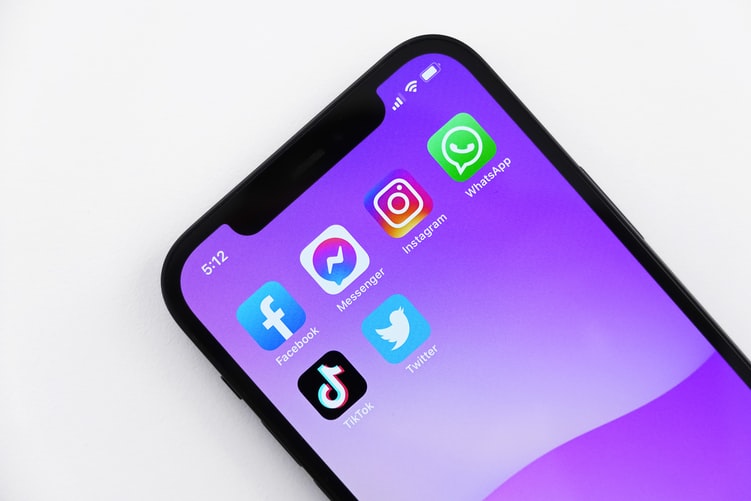Here’s the truth: If you want to create a positive impact as a business, you have to provide quality and engaging content for digital marketing campaigns.
A strong content gameplan paired with Digital PR helps businesses boost online presence, and reach their target audience through different mediums. We’re talking about web page copy, blog posts, social media content, online publications, and paid promotions to name a few.
Digital PR helps build credibility as you connect with your audience, creating a positive impact on your brand’s online reputation and image.
To help you do just that, NGP-IMC has a series of articles about how digital PR can help create positive impact, how to utilize information to get better results, and how to overall maximize your brand’s full online potential!
In NGP’s Digital PR How-To’s, you’ll learn:
• The 5 Best Content Planning Practices for Digital Marketing
• 4 Tips for Compelling Digital PR Call-to-Action
• 5 Need-to-Know SEO Basics for Digital PR
• The Importance of a Landing Page
• The Art of Storytelling in Digital Marketing
• Finding the Right Audience for your Digital Marketing Campaign
• 4 Tips for Compelling Digital Marketing Campaign Visuals
As we move forward, it is important to keep in mind that these techniques are not a one-size-fits-all solution. Your strategies should reflect what suits your brand and your business’ pillars. But ultimately, the goal is to get your strategic campaigns going!
Let’s get into it!
How-To #1: Content Planning 101
The groundwork of a digital marketing strategy revolves around content. It is no wonder that companies are investing in digital marketing services to double their marketing efforts in this highly competitive online industry.
“Clients usually ask for viral content, but we always say that there is no single formula to creating contagious content. It’s not always clear what makes something go viral. There are, however, tools and concepts that can help create content that sticks!”
— Chloei Capili, NGP-IMC Digital Lead
We are living in a digital era where acquiring an audience no longer relies solely on traditional forms of media. There has been a shift from conventional to online channels which allowed companies to reach their audience directly. It is worth knowing how to do content that converts leads instead of just creating one just to get it off your to-do list. Nothing leaves a bad impression than visiting a webpage or a social media account only to be disappointed with what you find – incohesive content.
We definitely understand that having a bad perception from your audience is the last thing you want. While planning and executing your content strategy may seem overwhelming, we are going to share these content planning strategies that will lift the burden off your shoulders.
1. Understand your target market
How well do you know your audience? We all may have heard of the saying “Try to appeal to everybody and you’ll appeal to nobody”. Logically, it might make sense to try to appeal to everyone, but the problem is it makes the brand generic and boring.
Now experts emphasize focusing on a target market. Target marketing involves market segmentation which means breaking an audience into segments and focusing marketing and public relations efforts on a specific group of consumers. However, digital marketers who talk about market segmentation tend to focus on demographics (gender, age, occupation, family status) and geographics (location). While these are important, when it comes to building a following these are just a fraction of the whole equation.
Geographics and demographics data don’t focus on the individual. It doesn’t provide any information about a person’s lifestyle or personality – their values, interests, and so on. That is why it is equally important to focus on the less talked about segmentation which is psychographic and behavioral.
Psychographic and behavioral segmentation is based on the idea that people’s choices reflect their lifestyle preferences. Therefore, when it comes to creating content that will attract and engage with people, these elements should be on top of the list. You want to build content that shares the same values and beliefs with your target market.
“Creating content focuses on these objectives: to attract, inform, and convert the audience.”
Generalizing your content will not only confuse your target market but will also not effectively convey your brand’s offer. Instead, have a laser focus on your target audience, study them and work to create content that will resonate with them. This will ultimately attract and pull them to your brand.
2. Research and preparation
It may seem that the bulk of the content planning process revolves around creating the content but the majority of it is spent heavily on research and preparation. Good content is not created on a whim, it is a result of careful planning and brainstorming. It is in this stage where you have to rely on data, trends, and competitors.
Content will only benefit your business if you’ve done proper research to provide valuable information to your audience. The content your business produces not only helps build traffic through search engines but also builds brand credibility. Well-researched content helps your business improve content marketing and can position you as a go-to source and industry leader for information.
Related: How To Go Viral
If you want to get a good insight on what content to generate in your industry, you can research the most asked questions and keywords. The easiest one is done by searching in a Google search bar and notice the suggested searches. This will give you ideas on topics to discuss and create.
3. Build a content calendar
Content creation is an ongoing cycle. A content calendar will provide you an opportunity to schedule when and which platform you plan to publish content.
The goal is to get content pieces well-scheduled in advance to stay organized and consistent, and adherent to the platform you’re prioritizing. Remember that different platforms have different formats and work different ways!
What’s similar across the board is that batch-creating content is important. Some businesses plan their content annually so they do not miss any relevant events while some have a monthly planning approach. There is no standard amount of content you need to plan, as long as you are in a position to get ahead.
It’s also a good practice to plan the formats the brand wants to create. According to DataReportal, internet users definitely prefer videos, which connect to the most-used video-viewing platform, YouTube. Consider this when creating your content plans (and in creating your budgets, in case you want to outsource!)
4. Content Repurposing
“The idea of working smarter, not harder, applies to content creation. If you’ve already come up with smart, evergreen content ideas, why not make a lasting impact and make it work harder for you, too? Repurposing content into valuable snippets and into different formats is key.”
— Harmony Adiao, NGP-IMC Editorial Lead
Repurposing your content that you spent hours crafting not only saves you time but also helps you get it in more audiences on different channels. This is done by turning one idea into different pieces of content for a variety of platforms. Doing this allows you to increase visibility while maintaining a consistent message. Here are ways on how you can share the same idea but add different kinds of value all the same:
- Pull a line from your blog or about page and quote it. Plus points if you turn it into a shareable graphic!
- Share the word through interviews. A public relations agency can help you land on a media interview where you can discuss more of a specific topic that your brand promotes.
- Create a valuable mini-series. Take a subject or a process that you have already mentioned and do a deep dive into each part. Every step or each piece of strategy is a new piece of content. This will help make it more digestible. (Just like this How-To series!)
5. Audit your content
Once you publish your content, most often than not, you never go back to it again. A content audit is done to check if the pieces of content you have are still relevant. Include in your content planning to revisit content periodically to ensure that everything stays up to date.
Assessing which contents perform best will give you insights on how you can improve your lead generation and digital marketing efforts. With a content audit, you can determine which content topics your audience prefer, generate ideas for future content, and eliminate content that no longer reflects your brand.
We hope this has been helpful for helping you plan your content!
Of course, it doesn’t stop here. Stay tuned for more on this How-To series! Bookmark the page, or follow us on Facebook and Instagram to catch the infographic versions of this series.
For more guides on content planning and execution, as well as other digital marketing strategies, work with NGP-IMC today. We’d love to help!


